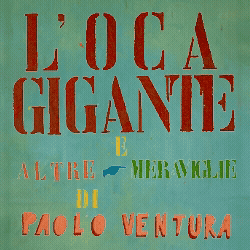
Centri commerciali, uffici e banche. Sono questi i palcoscenici scelti da Igor Cardellini e Tomas Gonzalez per il loro L’Âge d’Or(al Santarcangelo Festival dal 13/07). Un progetto iniziato qualche anno fa che mira ad analizzare e riproporre la complessità dell’era contemporanea attraverso il linguaggio teatrale. Strutturato come un vero e proprio tour guidato, L’Âge d’Or vuole svelare allo spettatore le dinamiche nascoste che muovono la società immergendolo nei luoghi che ne sono la massima materializzazione. In occasione di Santarcangelo il duo ha scelto di portare gli spettatori alla scoperta di un centro commerciale di Rimini, città che ha fatto del turismo di massa la colonna portante della sua economia. Eliminando le distanze tra performer e pubblico e facendo propri alcuni principi dell’antropologia e delle scienze umane, L’Âge d’Or esplora quei luoghi presenti in ogni città per sviluppare un nuovo sguardo su di essi e sulla società che li ha creati.
Guendalina Piselli: L’Âge d’Or is a project about architecture, power and capitalism. When and how did you start it?
Igor Cardellini: We started a few years ago – I would say four years ago – to have the idea of the project. We began to think about those places, those buildings, that are part of every city, those that we don’t pay attention to but that still materialize ideals and forces guiding our societies in a way or another. This is the reason we decided to choose three types of buildings (shopping centers, office buildings and banks), to tackle three central areas of our capitalistic societies: consumption with shopping centers, wage labor with office buildings and capital/finance with the banks.
Tomas Gonzalez: We consider these as three pillars of capitalism as we still know it today.
IC: We premiered the first guided tour in office buildings one year ago in Lausanne. Then we created the shopping center tour and we will write the bank tour soon.
GP: I know it’s the easiest link I could make but L’Âge d’Or is the title of one of the most iconic surrealist film. A masterpiece by Luis Bunuel with the collaboration of Salvador Dalì about and against social conventions of their time. Which is the aim of yours?
TG: L’Âge d’Or is a surrealistic film so there is no direct connection, I would say. I mean the critical aspect of course is a part of what we do as well but there is not a direct connection. We are referring to what is called in France “the glorious 30s” after the Second World War – when abundance seemed at hand. We also make a link to the myth of the Golden age as a part of the Greek and Roman mythologies and the idea of a timeless prosperity in a world of infinite resources.
IC: But indeed, we try to put people in a situation that allows them to have slightly different look at places they frequent in their everyday life without really looking at them. We are trying to create a kind of process of estrangement, so you end this experience with a different point of view.
GP: Shopping centers, banks and offices could be related to the idea of nonluoghi as Marc Augé defined theme. Spaces created just to cross, not to live. Places where you are just supposed to produce and consume…
IC: We are definitely attached to this vision but we also refer to a concept theorized by Michel Lussault which is hyper places. The mall fits well with this definition of a hyper place. In Lussault’s idea, a hyper place is also a place that condenses different scales, a place that condenses local, regional, national, international and global at the same time. The mall is really this, it’s a kind of simulacrum of the globalized city and it contains a sort of artificial multilayered version of the world.
GP: For Santarcangelo Festival, you choose a mall in Rimini. Why is this the right place for your work?
IC: Rimini is a really interesting place because it is a touristic destination and the city’s economy is really oriented towards mass tourism. L’Âge d’or is a theater performance in which we play with the codes of the guided tours, which is an activity that has been developed a lot through mass tourism. The phenomenon of mass tourism and the image of beaches go also with the mall and consumption and a certain vision of how you enjoy life, how you split it between work and leisure. And leisure is often associated with consumption. Seaside destinations such as Rimini embody this quite well.
TG: We toured a few shopping centers in Rimini and San Marino before choosing this one. There are keys aspects that we always need to find to keep the performance with the content that we want to bring and this one was fitting all of them.

GP: So L’Âge d’Or is a play staged outside of the theatre. What is the role of actor/ess in this context?
IC: The actor/ess is the guide who leads the performance and the tour. There are different threads in L’Âge d’or. There is the narrative one that is given by spoken words, and there is also the performative thread which unfolds during the whole tour and provides another possible story or experience. During the tour, spectators are asked to perform small acts. So they become actors/esses as well.
TG: We also wanted to avoid a kind of “zoo effect” where the clients of the mall would be looked down upon by the spectators of the performance. Indeed, a theater audience is coming to a shopping center and meets with a more popular audience, so we use some tools to deconstruct, to undo what could be a problematic situation. For instance, at the beginning, people are asked to wear hats and this gives to the group a huge visibility, they even look a little bit ridiculous. This kind of device rebalances the relationship.
IC: The role of the performer is also to bring attention to the theatrical aspect of the space around.
TG: What is really interesting is that in the mall you have many little scenes, all the windows shop, many different scenographies. That’s quite the décor.
GP: What is normally the reaction of the generic public? The one not participating to the performance?
TG: People are curious. Sometimes people come and ask “what is this?” and “what is going on?”. It also depends from the moment of the performance. There is a moment where we observe the people around us and there is also a very touching connection sometimes that happens between people being watched and the spectators. People do the tour with headphones and the guide has a microphone, so the spectators have always the guide’s voice in their hears which is quite comfortable because you don’t need to be close to the performer and at the same time there is something intimate about it. But there is a funny moment of “letting go” where we are in a shop and we put some music on. The guide starts dancing and playing with the object around and the group is invited to do the same. The result is a fun moment of togetherness… but it is also a bit perverse, as the group becomes simultaneously a bunch of living mannequins doing a videoclip just like in a commercial.
GP: There is theatre (in sense of art of the play) but there is also anthropology. With this project you ask the public to be a participant observer, and that reminds me as of Malinowski…
IC: Anthropology is a lens through which I look at performance and theater today. It is also how I create pieces starting with an anthropological reflection or concepts.
We also use social sciences and anthropological methodologies as tools to create situations in our performances. Such as, you mentioned it, participant observation developed by Malinowski. We also have in mind tools such as thick description theorized by Clifford Geertz who worked a lot on culture. It is an approach, an intention and a position, but we’re not doing science of course even though we are interested in the transformative power of these tools. They create other frames or lenses to look through and enable to understand the world differently
GP: We normally think about guided tours as a recreational activity. But the tours you organize are created to explore a few very serious themes such as the invisible force of the society. I see a sort of detournement, typical of humor…
TG: Yes, when you asked us how we started this project there was also a kind of absurd idea of people touring around shopping centers talking about the way they were built, going around in a supermarket and finally the absurdity of doing something seemingly so trivial as putting words on what surrounds us directly. It sounds a little funny but then it becomes quite powerful and critical when you just start clearly explaining how things have been designed and thought through and start thinking at what’s their effect on us. And yes, of course, it creates humor and it is something we are really attached to.
IC: For us it is critical in the sense that we are trying to understand, in the Weberian sense. We are not denunciating, we are not attacking because we, as persons, have all complex relationships with these spaces. Sometimes we are directly critical about them but there are also some sweet memories that come to us when we think about them. We are children from the 1980s and these are places that are kind of symbolic and characteristic of this period. We are trying to bring back this complexity.
GP: So, banks are going to be the next stage of the project?
IC: Yes, but before, we are going to show in Paris at La Ménagerie de Verre (end of October) a new project called Un spectacle (A spectacle) which is a sort of a continuation of L’Âge d’or. It going to be a guided tour of this specific theater. The idea is also to start from the architecture of this type of places to think about their ideology, what world views the theatre halls contain as well as what’s our relationship to them. It is basically the same type of reflection but applied to the theater hall and the white cube. In this performance, spectators will stay seated most of the time, the idea of a “guided tour” becoming just a narrative trick. It’s going to be mentalized guided tour.
GP: With or without moving you work reminds me the process of deriva urbana…
IC/TG: Situationism is definitely a clear inspiration. Even if people are not moving most of the time.
Igor Cardellini e Tomas Gonzalez
L’Âge d’Or
dal 13 al 15 luglio h. 14.15 e 17.15
16 luglio h. 11.15 e 14.15
Centro commerciale Le Befane, Rimini










